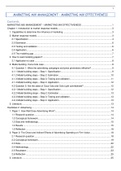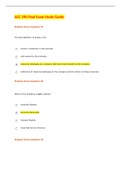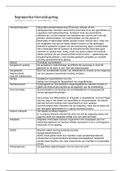Resume
Summary Marketing Mix Management - Marketing Mix Effectiveness (Y05129)
- Établissement
- Katholieke Universiteit Leuven (KU Leuven)
Summary of the part 'Marketing Mix Effectiveness' in the course Marketing Mix Management (Prof Kathleen Cleeren). This course has code Y05129 and is taught in the Master in Commercial Sciences (Handelswetenschappen, KU Leuven Carolus Antwerp) as a compulsory or elective course. All lectures and pap...
[Montrer plus]





